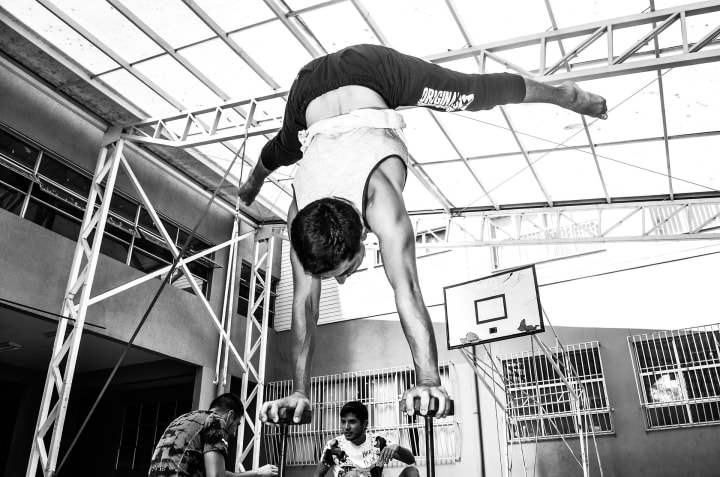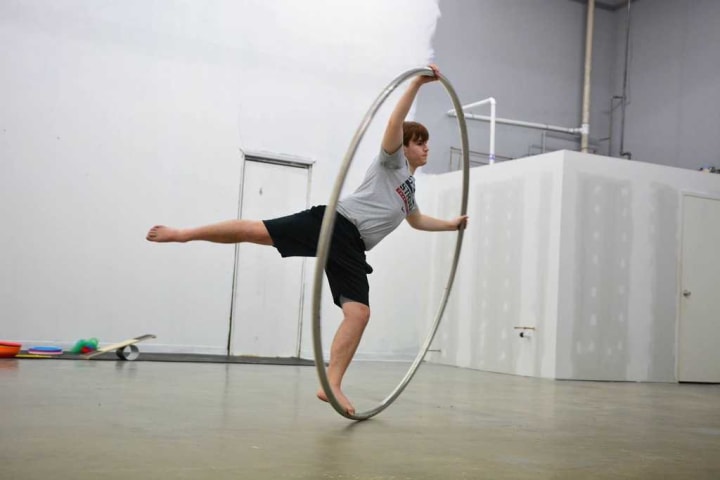Getting Fit Is As Easy As Joining the Circus
A fun new trend is helping many people get in the best shape of their lives!

It is the start of a new year, and with it comes resolutions. Many will join traditional gyms while others will start new diets, all in the hopes of getting fit or losing weight. We all know maintaining a healthy lifestyle has been associated with providing many health benefits, but it does take a lot of work and many will give up just a few weeks later.
Physical activity has been shown over and over to improve mental health, improve mood, and reduce the risk of certain cancers, heart disease and diabetes. In recent years, there has been a growing movement to make physical fitness much more enjoyable with a variety of activities and classes. Among this trend, practicing the skills often seen in a circus has gained popularity and a devoted following.
Circus schools and studios have sprung up around the world in large cities and small towns, comprising of a variety of disciplines for those who want to explore a more artistic activity. Acrobatics, juggling, trapeze, aerial, hand balancing, pole, and cyr wheel are popular, but there are many more disciplines. Schools vary in size and the number of disciplines they offer, but most offer a positive environment where many participants will cheer and encourage classmates to keep working towards their goals. Friendships often form. Some schools and studios will also give performances allowing students to show off what they have learned.
Juggling is an art form that involves manipulating objects called props. Often more than one prop will be tossed into the air, bounced off the ground or other surface, or manipulated in some other manner. Since most props are small, jugglers are able to practice almost anywhere. Juggling has been shown to improve ambidexterity, hand eye coordination, depth perception, and concentration.
Traditionally the props used in juggling are balls or clubs but there a variety of props that can be manipulated. Dancing with custom-made hula-hoops is called hooping or hoop dancing. Poi is a Maori based dance form in which weighted balls on the end of cords are swung to form rhythmical patterns. Sometimes these balls are lit on fire. Diabolo is a popular activity where an hourglass shaped cup is tossed and caught with a string between two sticks.

Jugglers toss a variety of props into the air at an open air gathering. Photo courtesy of 5ara/Creative Commons.
The aerial arts comprise of various acrobatic acts performed on and around a variety of apparatuses suspended in the air. Among the more common apparatuses are long bolts of fabric (often called aerial silks), large metal rings (referred to as aerial hoop or lyra), and rope (named corde lisse). There are a variety of other apparatuses and companies that will custom-make unique ones. Practicing the aerial arts can improve flexibility as well as range of motion, increase strength, relieve stress, and improve work life balance. Most aerial artists have developed impressive upper body strength.

Students at Flying Fantastic in an aerial hoop/lyra class. Photo courtesy of Flying Fantastic.
Trapeze is perhaps one of the more famous circus acts. It is actually part of the aerial arts and consists of a horizontal bar hung from a support, which the artist performs on. Acrobatic acts are performed on it either from it swinging back and forth or hanging static from a rigging point. This may performed solo, or with two or more performers.

Static trapeze, pictured above, and swinging trapeze are perhaps the most well known of the aerial arts. Photo courtesy of Aerial Arts Toronto.
Hand balancing sounds exactly like its name, the performance of acrobatic skills while balancing on the hands. Often it is performed on canes—poles with a wood block on top or simply on the ground. Hand balancers are known for their incredible upper body and core strength, as well as awe inspiring flexibility. Many practitioners often cross train in contortion.

Hand balancer performing on canes. Photo courtesy of Raul Gajardo/Creative Commons.
Rising in popularity is the cyr wheel, a large metal hoop that is usually four to six inches (10 to 15 cm) taller than the performer. The artist will stand inside the wheel and spin, and gyroscopically manipulate it. It was invented in 1996 by Daniel Cyr where it quickly was incorporated into various circuses. Today it is considered a discipline of wheel gymnastics and there are even major competitions associated with it. Cyr wheel artists tend to have well developed core strength.

Cyr wheel is a relatively new circus art but it growing in popularity. Photo courtesy of Imagine Circus.
In the circus there is no ideal body shape and circus skills can be mastered at any age and adapted to every body type. Those with physical disabilities can perform a variety of skills, many saying they feel empowered. There is a growing number of instructors eager to work with adaptive athletes.
Athletes who rely on wheelchairs have been able to lift partners who do acrobatic acts. Artists with prosthetic limbs have mastered such skills as juggling, the aerial arts, and hand balancing. One aerialist, Lauren Watson, has benefited from participating in the circus arts. Partially paralyzed from the waist down after a car accident in 2000, she found the aerial arts three years ago to be an activity that improved her quality of life. Relying solely on upper body strength, she performs various movements suspended in the air.
For those that have found traditional gym workouts to be difficult to follow, joining a circus school or studio has opened up a new world of experiences. There is joy in learning a new skill and smiles and congratulations are often seen in classes despite the physical exertion. After all, the circus is supposed to be fun.
About the Creator
Liza Saguto
Liza Saguto is a freelance science communicator based in Southern California. Her blog Beyond The Petri Dish covers a variety of science topics. Liza's favorite subject to write about is space exploration.
https://beyondthepetridish.com






Comments
There are no comments for this story
Be the first to respond and start the conversation.